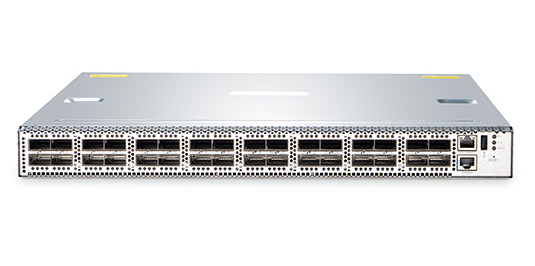The networking industry is making an important move toward open switches, in which the hardware and software are separate entities that can be changed independently of each other. As usual, most enterprises use the closed switches in their data center. However, some companies want to customize the hardware and software to their needs. Until recently, the media is also giving attention to do-it-yourself switches. But this new trend may be confusing to newcomers, those who wonder the differences between whitebox switch and brite-box switch. This article could solve this problem and point out the advantages of whitebox switch.
Whitebox Switch and Brite-box Switch Overviews
According to its literal meaning, the whitebox switch refers to network switch without a label. In short, whitebox switch does not focus on the brands. The users may buy the OS and the hardware from different vendors. Basically, whitebox switch can be divided into three types: First, a whitebox switch can be sold as a bare metal device – the OS and the hardware are completely separated; second, a whitebox switch may be brought from the vendor who only pay attention to the service of OS or hardware, and the users have multiple choices on hardware or OS; third, a whitebox switch can be purchased with hardware and installed OS just like the branded switches, but the difference is that a whitebox switch can be labeled with the brand of buyer’s company or with no brand required by the customers. Therefore, more and more organizations opt for whitebox switches which can customize the devices to their needs because of their flexibility and cost-efficiency.
A whitebox switch refers to the ability to use generic, off-the-shelf switching and routing hardware, which is generally used with software-defined networks (SDNs). But how to differentiate it from brite-box switch? Brite-box switches stand for branded white box. There actually is a difference from white box: a brite-box switch is made by an original design manufacturer (ODM), and is often the same switch offered by the ODMs as bare metal, but it sports a front bezel with a brand name like Dell and HP. So a brite-box switch supports a brand name of any reputed IT company.
Whitebox Switch vs Brite-box Switch: Who Is the Winner?
From the perspective of manufacturing, whitebox switches and brite-box switches can be identical. But in fact, the business aspects of white box versus bright box may be very different. It is important to consider all aspects of the various offerings such as price, warranty and support when selecting a white box or bright box solution. In fact, whitebox switches are better choices on the reduced capital cost. Some research data indicate that companies transitioning the network over whitebox switches reduced the network infrastructure costs by 90% over the past few years. Here are the benefits of whitebox switches:
whitebox switches cost significantly less than the equivalent-speed brand-name switches. The key point is the potential low operating costs. whitebox switches can support a wide range of IT development tools, which enable customization of the switch infrastructure to the specific needs of the data center environment.
From the perspective of reliability, white boxes are equivalent to brand-name systems because they are actually the same hardware. Whitebox switches can be deployed either in the data center or in the access network. Hyperscale data centers can deploy whitebox switches to reduce capital expenditures and leverage open SDN tools to improve time to deployment and automation.
White boxes are not at feature parity with layer 2/3 switches for uses such as campus switching or aggregation. Vendors to watch include software suppliers Cumulus, Big Switch and Pica8, as well as the associate hardware/chip manufacturers like Accton, Quantum, Intel, Broadcom. Significant growth of the white box market has the potential to impact the margins and market share of the incumbent Ethernet switch providers, specifically Cisco (and HP, Juniper, IBM, Dell, Brocade).
Summary
Whitebox switches have more advantages than brite-box switches, which will prove its CAPEX and OPEX benefits in the long term, and it will expand to enterprise buyers and into access networks in the future. In addition, administrators can select network hardware and software platforms independently to make the best choices for each scenario.
Related Articles:
What White Box Switches Mean to SDN Deployment
A Glimpse Into the Business of White Box Switches




